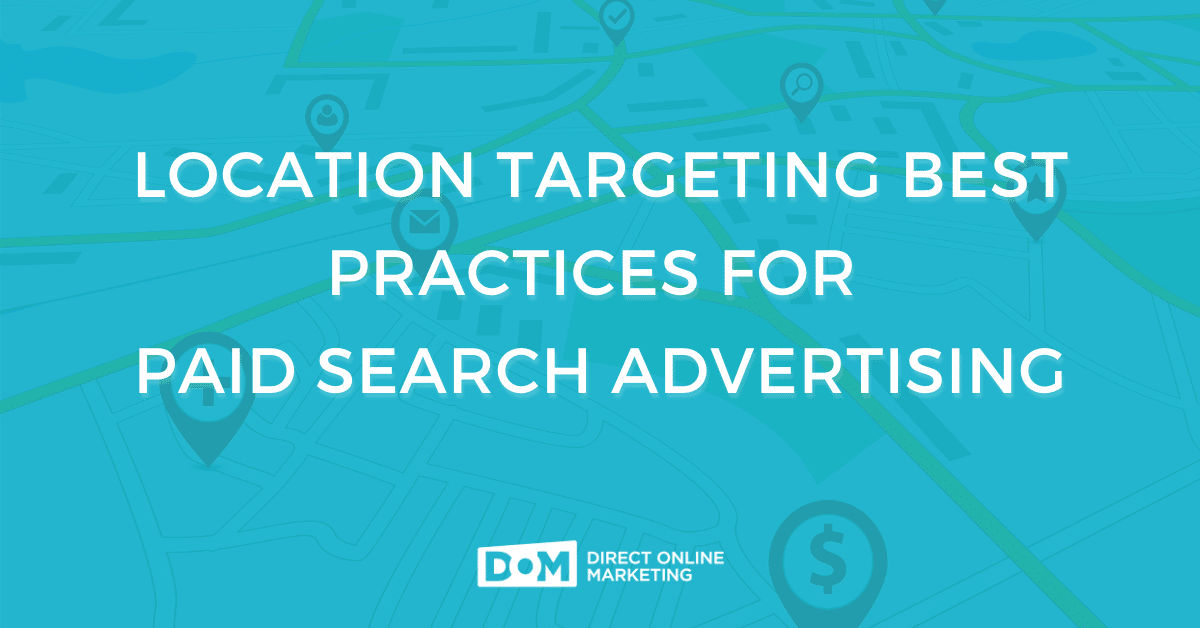
Advertising. It’s all about hitting the right audience, at the right time, with the right message, at the right place. Right? Paid search engines provide advertisers with some great features in order to make their ad campaigns successful. One of the best, and easiest to use, features is location targeting. We’ll review advertisers’ options, as well as touch on some best practices designed to help you make the most of your advertising budget and avoid sinking money into a location that isn’t successful.
Location Targeting
Do you sell on a local level? Perhaps state-wide, nationwide or do you have a global reach? With Google Ads, you can target the following levels:
- Region
- State
- Congressional District
- City
- City Region
- Neighborhood
- Borough
- District
- County
- Municipality
- Postal Code
- Nielsen® DMA® Region
- Radius around a certain pinpoint
- Airport
- University
Location Exclusions
Have areas you don’t want to reach? Perhaps you know a certain zip code or state is just not profitable. Perhaps you have an agreement with your competition not to poach on their territory. Then, location exclusions can help you, well, exclude areas you do not want to reach. Similar to negative keywords, if a user is based in your excluded location your ads should not display to them.
Location Options
As a paid search advertiser, you also have options for how to target or exclude users. These options can help you expand or refine your targeted/excluded areas. You can target:
These options are also available for excluded locations. Again, depending on your budget and offering, you may want to tailor your setting in order to make the most of your ad dollars.
Location Targeting Best Practices
Below are just a couple reasons how to make the best use of location targeting. Please share your reasons or tactics in the comment section below this post.
- Budget: Keep in mind the budget you have to work with. If you’re on a limited budget (as most advertisers are) and you sell on a national level, you may want to consider advertising in areas you know are your top performers. Then, expand once you have success and more budget to put forth.
- IMC (Integrated Marketing Communications): Consider where your TV, radio, billboard, or print ads are showing and mimic those areas in your online advertising. This will help create a consistent presence for users who are searching online after seeing an offline ad.
- Segment by State: If you are advertising nationwide, consider putting each state in separately, instead of targeting the whole United States. This will enable you to see state-by-state performance, as well as increase or decrease bids on the state level. (See screenshot under Reporting, below.)
- If you’re targeting multiple states within the U.S. they can be in the same campaign, unless you want/need different ad copy per state. In this case, you would want separate campaigns.
- Segment by Country: As a best practice, you should segment campaigns by different regions, more so when advertising to different countries. Here are a couple of scenarios:
- If you market to different countries, you will want to create a separate campaign for each country. You can lump them together if the countries have similar psychographics (i.e. values, attitudes, interests, lifestyles), but for the most part, they should be separate, especially if you’re targeting different languages.
Reporting
Geo-location is very helpful, not just from a segmentation standpoint, but also from a reporting and analytic perspective. Organizing campaigns by geography is also beneficial since costs and competition can vary by market. This segmentation can help you see, at-a-glance, what’s working or not working, and optimize for that particular market.
Check out our comprehensive guide to location-based reporting in Pivot Tables: The Unsung Hero of PPC Performance Evaluation.
Also, if you’re still wondering whether PPC or SEO is the right choice for you, we can help with that, too:
Have anything to add? Want to share how you’re utilizing geo-targeting? We’d love to hear from you!


